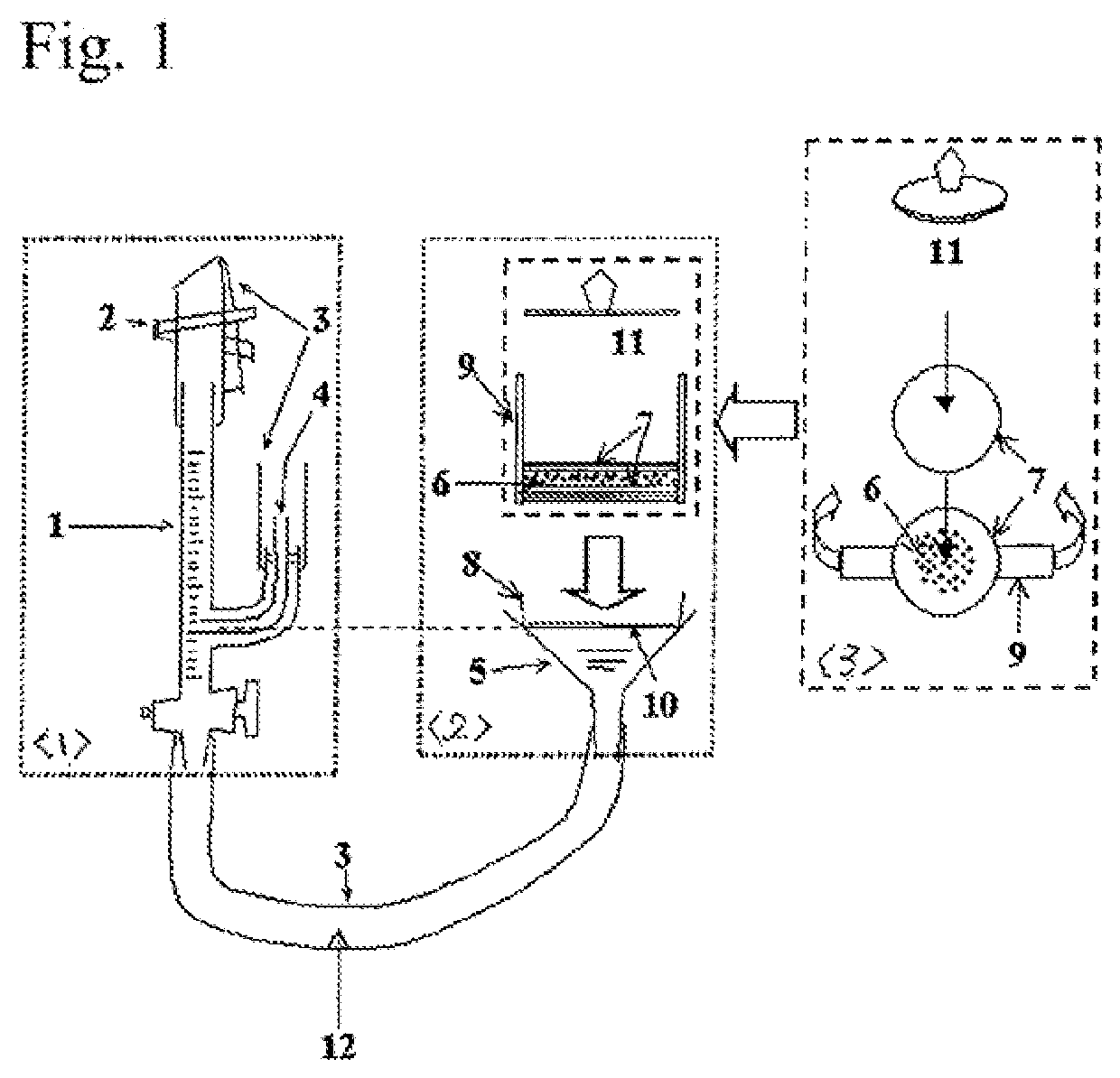Binder for a secondary battery electrode and use thereof
a secondary battery electrode and binder technology, applied in the direction of cell electrodes, electrical appliances, cell components, etc., can solve the problems of reducing battery capacitance and deteriorating cycle characteristics (durability), and achieve excellent cycle characteristics, excellent binding ability, and improved battery durability.
- Summary
- Abstract
- Description
- Claims
- Application Information
AI Technical Summary
Benefits of technology
Problems solved by technology
Method used
Image
Examples
examples
[0143]The present teaching is described in detail below based on examples. However, the present teaching is not limited by these examples. In the following, “parts” and “%” mean parts by mass and % by mass unless otherwise specified.
[0144]In the examples below, the crosslinked polymer (salt) was evaluated by the following methods.
[0145](1) Measuring particle size in aqueous medium (water-swelled particle size)
[0146]0.25 g of a powder of the crosslinked polymer salt and 49.75 g of ion exchange water were measured into a 100 cc container, which was then set in a rotating / revolving mixer (“Awatori Rentaro AR-250” by Thinky Corporation). This was then stirred (rotating speed 2,000 rpm / revolving speed 800 rpm, 7 minutes), and then defoamed (rotating speed 2,200 rpm / revolving speed 60 rpm, 1 minute) to prepare a hydrogel of the crosslinked polymer salt in a water-swelled state.
[0147]Next, the particle size distribution of this hydrogel was measured with a laser diffraction / scattering type...
example 1
[0212]An electrode was prepared using the crosslinked polymer salt R-1 and evaluated. The specific procedures, evaluation methods and the like are described below.
[0213]
[0214]SiOx (0.8<x<1.2) surface coated with 10% carbon by the CVD method (hereinafter also called the “Si active material”) was prepared, and a mixture of graphite and the Si active material was used as the active material. A mixture of the crosslinked polymer salt R-1, styrene / butadiene latex (SBR) and carboxymethyl cellulose (CMC) was used as the binder. Using water as the dilution solvent, these were then mixed with a Primix T.K. Hivis Mix at a weight ratio of graphite:Si active material:R-1:SBR:CMC=100:10:1.0:1.0:1.0 (as solids) to prepare an electrode mixture layer composition (electrode slurry) with a solids concentration of 45%.
[0215](Measuring Viscosity of Electrode Slurry)
[0216]The slurry viscosity of the electrode slurry obtained above was measured at 25° C. at a shearing speed of 60 s−1 with an Anton Paar r...
PUM
| Property | Measurement | Unit |
|---|---|---|
| mass % | aaaaa | aaaaa |
| mass % | aaaaa | aaaaa |
| volume-based median diameter | aaaaa | aaaaa |
Abstract
Description
Claims
Application Information
 Login to View More
Login to View More - R&D
- Intellectual Property
- Life Sciences
- Materials
- Tech Scout
- Unparalleled Data Quality
- Higher Quality Content
- 60% Fewer Hallucinations
Browse by: Latest US Patents, China's latest patents, Technical Efficacy Thesaurus, Application Domain, Technology Topic, Popular Technical Reports.
© 2025 PatSnap. All rights reserved.Legal|Privacy policy|Modern Slavery Act Transparency Statement|Sitemap|About US| Contact US: help@patsnap.com

